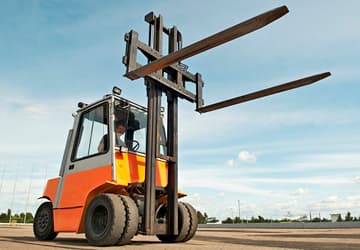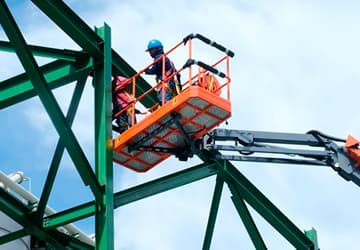In the dynamic world of heavy equipment, the right decisions can pave the way for success. At attrac.co, where heavy equipment leasing, sales, and rentals meet your needs, we understand the significance of every choice you make. In this comprehensive guide, we’ll dive into the intricate world of cranes and help you navigate the terrain of choosing between electric and diesel-powered equipment.
Introduction
Cranes are the backbone of industries relying on heavy lifting, precision, and efficiency. Choosing the right crane and determining its power source – electric or diesel – is not just about equipment; it’s a strategic move that can impact productivity, costs, and environmental responsibility. Join us on a journey through crane types and the electric-diesel conundrum to make informed decisions that resonate with your objectives.
1. Environmental Sustainability
Electric Equipment: In an era focused on reducing carbon footprints, electric equipment shines as the eco-friendly alternative. Emitting zero tailpipe pollutants, electric machinery significantly reduces air quality concerns. This makes it ideal for indoor operations, urban projects, and areas where emissions regulations are stringent.
Diesel Equipment: While diesel engines have made strides in emissions reduction, they still produce nitrogen oxides (NOx) and particulate matter. Their impact on air quality and the environment has spurred innovations in cleaner diesel technology. However, electric machinery remains the leader in environmental friendliness.
2. Financial Considerations
Electric Equipment: The initial investment in electric machinery can be higher due to advanced electric drivetrain components and batteries. However, it’s important to consider the long-term perspective. Electric equipment often boasts lower operating costs, with electricity being more affordable than diesel fuel. Additionally, fewer moving parts in electric motors lead to reduced maintenance expenses.
Diesel Equipment: Diesel-powered machinery typically has a lower upfront cost, making it an attractive option for businesses with budget constraints. However, remember that ongoing fuel costs and maintenance expenses can accumulate over time, potentially outweighing the initial savings.
3. Performance Dynamics
Electric Equipment: Electric motors offer immediate torque delivery, resulting in impressive acceleration and responsiveness. They are particularly suitable for tasks involving frequent starts and stops. Moreover, their quieter operation and minimal vibration contribute to a more comfortable working environment.
Diesel Equipment: Diesel engines are renowned for their high torque output, making them indispensable for heavy-duty applications like construction and mining. Yet, they may require warm-up time and exhibit reduced efficiency at lower speeds.
4. Power Availability and Infrastructure
Electric Equipment: The efficacy of electric machinery relies on reliable access to electricity and charging infrastructure. If your projects are situated in areas with inadequate electrical facilities, electric equipment might pose challenges.
Diesel Equipment: Diesel equipment carries its power source through onboard fuel tanks, making it an apt choice for remote locations and areas with unstable power grids. However, ensuring a steady supply of diesel fuel is essential.
5. Adapting to Trends and Regulations
Electric Equipment: Governments worldwide are tightening emissions regulations and offering incentives for adopting electric equipment. Opting for electric solutions positions your business in line with future regulations and demonstrates environmental responsibility.
Diesel Equipment: Despite advancements, diesel engines face ongoing scrutiny due to emissions concerns. Keeping abreast of changing regulations and adapting accordingly is vital to avoid potential operational restrictions.


- Mobile Cranes
- All-Terrain Cranes: Versatile for various terrains, combining the features of truck-mounted and rough-terrain cranes.
- Rough Terrain Cranes: Engineered for challenging terrains with robust tires and powerful engines.
- Truck-Mounted Cranes: Mounted on trucks for easy transportation, ideal for quick setups.
- Crawler Cranes: Tracks ensure stability and heavy lifting prowess, particularly in construction.
- Tower Cranes
- Fixed to the ground or structures, these cranes dominate urban landscapes during high-rise projects.
- Overhead Cranes
- Ideal for manufacturing and industries, they move materials within confined spaces using a bridge system.
- Gantry Cranes
- Supported on legs that can move, they offer flexibility in shipyards, warehouses, and construction.
- Jib Cranes
- Featuring a horizontal arm for a limited radius of movement, they’re excellent for confined spaces.
- Telescopic Cranes
- Extendable sections grant increased reach and lifting capacity, used in construction and utilities.
- Floating Cranes
- Mounted on barges or vessels, they excel in ports, shipyards, and water-based projects.
- Loader Cranes
- For loading and unloading goods onto trucks, commonly seen in logistics and transportation.
Navigating Electric vs. Diesel Equipment
- Environmental Sustainability
- Electric Equipment: Zero emissions, excellent for indoor and urban areas with strict regulations.
- Diesel Equipment: Cleaner diesel technology but still produces emissions; electric takes the lead in sustainability.
- Financial Factors
- Electric Equipment: Higher initial cost, but lower operating and maintenance costs over time.
- Diesel Equipment: Lower upfront cost, but higher fuel and maintenance expenses.
- Performance and Noise
- Electric Equipment: Instant torque, smooth operation, and reduced noise for a comfortable work environment.
- Diesel Equipment: High torque, but potential for noise and vibration, particularly at low speeds.
- Power and Infrastructure
- Electric Equipment: Requires accessible electricity and charging infrastructure.
- Diesel Equipment: Self-sufficient in terms of power source but dependent on fuel availability.
- Regulatory Compliance
- Electric Equipment: Aligns with stricter emissions regulations and incentives for sustainability.
- Diesel Equipment: Subject to evolving emissions standards; adaptability is crucial.
From tower cranes shaping skylines to jib cranes handling precision tasks, the world of heavy equipment is diverse. At attrac.co, we acknowledge that choosing the right crane and power source is pivotal. Our aim is to empower you with insights that drive your choices forward. Whether you’re aiming for efficiency, sustainability, or cost-effectiveness, our offerings encompass a range of solutions for both crane types and power preferences. Explore the extensive options at attrac.co for a partnership that thrives on informed decisions, ensuring your success today and tomorrow.
Satisfied With The Facilities At Alltrac.co Construction
Equipment Rental Services.
Mark J. Zamberg

